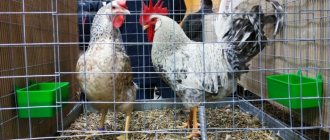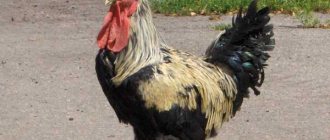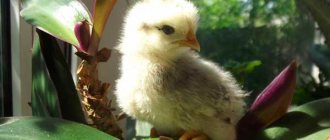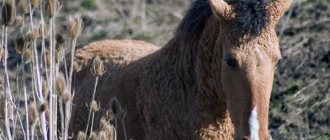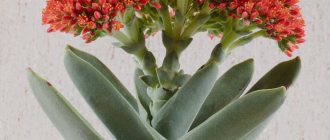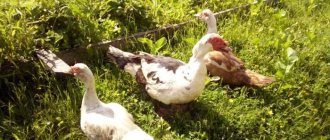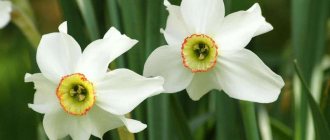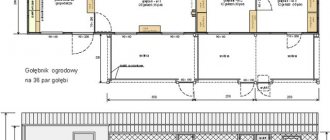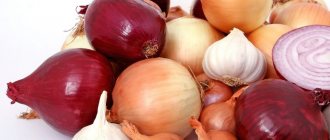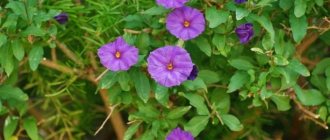Origin of the “Baku people”
The heyday of the breed occurred in the 50-60s of the 20th century, when Azerbaijan was part of the Soviet Union. Every pigeon breeder at that time tried to develop a more and more interesting species, the representatives of which would have better performance and flight characteristics.
Birds pass on their abilities by inheritance, but in order to reveal them, it is necessary to educate and train them.
These are descendants of the most ancient breeds of pigeons, the cradle of which was Persia. They had greater endurance compared to other birds, and “wore” boots on their paws. According to the genetic code, “Bakuvits” are the closest relatives of Iranian representatives.
Exterior of a bird
The breed includes several species, which usually differ only in color. Breeders did not pursue the beauty of appearance, did not pay attention to the color and pattern of the bird, since they did not breed it for a beauty contest. Hence the large color palette - from white and rare yellow to black. But regardless of external data, all “Bakuvites” are distinguished by the beauty of combat and amazing flight.
These small birds have a neat oval head; it can be decorated with a crest or forelock. The transition to the beak is smooth, the forehead is rounded, the parietal part is rectangular. The beak is thin, smooth, does not exceed 25 mm in length, and has a rounded tip. The eyes are shiny, the color depends on the color of the plumage. The body is toned and muscular. The neck is long with a graceful curve. The back is wide, tapering towards the tail.
The tail is parallel to the ground and consists of 12 large feathers. Powerful, strong wings fit tightly to the body, their ends lie close to each other, but do not intersect, that is, they do not form a “cross”. Feathers may or may not be present on the paws. Each variety has its own plumage color.
Appearance
All varieties of the breed have their differences, as well as common features, which give the right to say that the bird belongs to this breed.
- Size is medium.
- The wings are strong and powerful.
- The torso is muscular, somewhat elongated.
- The back is wide.
- The neck is long, its shape is curved.
- The skull is oblong.
Appearance of the Baku pigeon
Coloring and other appearance details depend on the variety. It is worth noting the excellent adaptive properties of pigeons. Without them, birds would not have such a distribution.
Video – Baku fighting pigeons
Exterior Disadvantages
There are a number of shortcomings in the exterior of the bird that affect the assessment of specialists who determine the purebred of the Baku breed.
It is acceptable for birds to have beige eyelids, the absence of a bend in the neck, and the parietal part is more rounded, but there is no need to talk about the purebred of the individual.
Inadmissible shortcomings are:
- eyes of different colors;
- short body;
- thick, short neck;
- thick, short beak (except for the high-flying subspecies);
- feathers grow on the fingers;
- the plumage is loose, loose;
- hunched back;
- the wings are hanging;
- the tail touches the ground.
If one of these defects is present, the individual is rejected.
How to identify a purebred Baku resident
To choose a purebred Baku, you need to pay attention to the characteristics of his exterior, which are acceptable and unacceptable. The first group includes a rounded crown, a straight neck (without bending), and a flesh-colored eyelid. Such qualities do not make a pigeon defective or defective, but such birds should not be allowed to breed. The list of unacceptable characteristics includes:
- short body;
- different eye shades;
- feathering on fingers;
- short or thick neck;
- drooping wings and tail (if it touches the ground);
- breasts that are too prominent;
- hump on the back;
- loose, loose feather cover.
Before purchasing, it is recommended to carefully examine the bird, paying attention to the breed qualities.
If there is one or more unacceptable characteristics of a pigeon, it is not recommended to buy it, since it cannot be considered a purebred.
Flight performance and play
Representatives of the Baku breed prefer to fly in bulk. They soar so high into the sky that they are often impossible to see. In flight, birds can last from 2 hours; according to experts, the flight duration reaches 10-12 hours. In order for the pigeon to always return home and not get lost, it must be properly trained. Training and education are mandatory.
The purity and correctness with which the pigeon enters the post are considered the main indicators of the quality of the game. Fighting requires a lot of energy and strength from the bird. In 5-6 hours she should return home. Intense fighting is observed for the first 3.5 hours.
Types of fighting of Baku pigeons:
- Pole fight - this type of fight is highly valued by breeders. The dove energetically and noisily flaps its wings and rises vertically. Then he suddenly and sharply throws his head back and does a somersault, which is accompanied by a loud bang. A trained bird can perform up to 10 such lifts in succession.
- The frozen fight is the exact opposite of the previous one. The bird rises slowly, slowly and somersaults, as if being in one place, that is, hovering. Then it continues to rise. Although the somersault is done more slowly, the clicks should be present.
- A pillar with a screw - the dove rises as if in a spiral.
- Ribbon fighting - not all experts like it, and some consider it a drawback of the bird. The pigeon performs “pirouettes”, but during normal flight and at the same height.
Training
The beauty and duration of summer are already inherent in birds at the genetic level; all that remains is to develop them and enjoy the play of your pets.
Baku pigeons must be trained regularly, devoting a lot of time to this. Since the bird spends quite a lot of energy during flight, it must be given high-quality, highly nutritious food.
Young animals begin to be trained at 30-40 days of age. There is no point in delaying the start of training, as the chances of raising a champion decrease as the age of the pigeon increases. Exceptions are made for birds that develop slowly. Pigeon breeders begin training them when they are 2 months old.
It should be borne in mind that if the Baku team score early - 15 days after the first flight, then after the “molt” they can change the game. The best results are shown by individuals who began to play from the age of five months.
Birds do not immediately turn somersaults. A young individual may lose height or fall over on its tail, be patient, everything will work out very soon. She develops her unique style of play and summer only by the age of 2-3 years. No more than eight individuals are released into the sky at once and learn to strike.
A little history
The homeland of Baku pigeons, as well as some fighting breeds, is ancient Persia. After all, previously the northern part of the Republic of Azerbaijan belonged to Iran, but in 1818 it became the territory of the Russian Empire. There the appearance and flight abilities of the bird were formed on the basis of ancient Iranian pigeons.
But pigeons achieved modern achievements and their final appearance on the territory of Soviet Azerbaijan. Baku had the most bird enthusiasts. Each pigeon breeding family dynasty has tried for generations to develop the best qualities of the breed, strictly selecting the most capable sires and intensely training the young stock. As a result, the breed acquired valuable features:
- unpretentiousness;
- disease resistance;
- high adaptive abilities;
- rapid adaptability to feed;
- duration and altitude of flight, high-quality combat and skillful play.
Baku pigeons are easy to care for and adapt well to living conditions and a variety of foods.
Thanks to the amateur Bakuvians, the breed achieved high levels of sporting achievements, because the main attention was paid to the development and improvement of these very traits. Azerbaijani pigeons have spread widely throughout the Caucasus, Krasnodar Territory and central Russia.
Basic rules of training
Here are the most common mistakes that novice pigeon fanciers make:
- Doves are given a rest from training 2 days before laying and one day after it. New parents are given “maternity leave” until the chicks are 7 days old.
- Training is carried out in open space; it is impractical to conduct them in the city, and in good weather. In fog or rain the bird can get lost.
- If you are going to a competition, do not feed your bird heavy food 4 days before. An hour before the start of the competition, they must be given something to drink. Pigeons are transported in spacious cages, avoiding overcrowding.
- You should not release young ones with old individuals, or females with males.
It also happens that after training the bird does not return home. In most cases, this is due to bad weather conditions (thunderstorm, rain, fog, strong wind, etc.). Experts recommend checking the weather reports before releasing them, given that Baku pigeons spend a lot of time in the sky.
According to statistics, birds bred in the same place are very rarely lost in the third or fourth generation. And there is a scientific explanation for this. Pigeons have very well developed genetic memory. This is worth keeping in mind when a couple is kept in an aviary and is not allowed to fly out. The skills of returning home will not be passed on to their offspring.
About the breed
Fascinating, beautiful fighting and play are the main advantages of Baku pigeons. To these pigeon breeders add an excellent immune system and unpretentiousness. Birds learn quickly and respond well to training, the main thing is to carry it out persistently. Genetic predisposition and the correct training regimen are the most important elements for the success of a pigeon.
Each individual is very individual. For example, the initial flight elements of the game, such as landing on the tail, during which the pigeon flaps its wings and then takes off, become available to some birds within a few weeks of training, while others become accustomed only after a year.
These individual qualities directly depend on genetics and pedigree. Baku pigeons are capable of flying from two to, according to some reports, twelve hours.
Baku pigeon in flight
A column of black pigeons can reach 15 meters, while the birds easily perform 5-7 somersaults. When judging at competitions, the color of the pigeon is not taken into account, since the quality of the summer and its duration are considered the most important.
Although there is an opinion among pigeon breeders, supported by references in specialized literature, that of all the colors, the flight qualities are best in white Baku pigeons. They reproduce easily, have developed intelligence and good memory. Pigeons are known for their endurance. Also, few other breeds are able to stay in the air for up to twelve hours.
The female lays eggs all year. This happens even while she is molting. If this happens “unplanned” for you, then do not allow them to multiply. One effective way is to remove items from the enclosure that could be used to build a nest.
Sharing their impressions, pigeon breeders say that when holding a Baku pigeon in your hands, it seems like you are holding a smooth stone. They are monogamous, strongly attached to the nest-home.
Video - Contents of Baku pigeons
Conditions of detention
The life expectancy of a pigeon is on average 30 years, but provided that comfortable living conditions are created for it. Otherwise, the bird will live 2 or even 3 times less.
Dovecote size
Since this breed is distinguished by its flight qualities, its representatives should have the opportunity to “train” their wings at any time - not only in the wild, but also indoors. In addition, they must move freely inside and make small flights.
Therefore, for 10 birds there should be at least 15 square meters. m, and the height of the room is 150-200 cm. If it is possible to increase the size, then increase it.
Temperature, ventilation
The room maintains a positive temperature all year round - in summer up to +21°C, in winter it is enough so that the thermometer does not drop below 5°C. Sudden changes in temperature should be avoided; pigeons react poorly to them, as well as to heat.
In a hot place they breathe heavily and open their beaks wide. Well-fed pigeons especially suffer from high temperatures. When it is hot, pigeons are not allowed to fly; this is a very big burden on the body. Overheating of birds is observed in regions with hot climates, especially if the roosts are under the roof. To reduce the temperature, it is recommended to hose down the roof with cold water.
Hypothermia is most dangerous for young animals in early spring. Their growth slows down, development is delayed, intestinal function is disrupted, and the latent course of diseases is activated. The hypothermic chick falls into a stupor. On cold nights, parent pigeons must be returned to the nest to keep their babies warm. Or they place the nest with the young in a warm place overnight, and return it to its place in the morning.
According to experienced breeders, it is not advisable to carry out heating in a dovecote; it is enough to caulk all the cracks and insulate the floors. During the autumn and winter months, the litter is changed regularly to prevent it from getting damp. In severe frosts, birds are given warm drink and nutritious food.
When breathing, a bird, like all living things, releases carbon dioxide. If there is no ventilation, then its concentration increases, which cannot negatively affect their health. They refuse to eat, their bones become brittle and brittle due to calcium leaching. On the other hand, when excrement decomposes, ammonia is released. And its content is just greater in the upper part of the dovecote. Therefore, the air should circulate all the time and not stagnate. This can be achieved by installing ventilation, but making sure there are no drafts.
Perches and nests
Smooth wooden perches are installed indoors. Each pigeon should have its own individual place where it can rest from long flights and numerous training sessions. When constructing perches in the form of shelves, they can be made in pairs.
If there are no nests in the house, then the couple will make one for themselves from scrap materials, in a place suitable for themselves. But it is worth remembering that they will be tied to him forever, and it will be impossible to resettle them. Therefore, it is better to arrange nests in advance. They are usually small wooden boxes in the shape of a square, without a top. Natural bedding must be used - hay, straw.
Drinking bowl, feeding trough, bathing bowl
Experienced breeders recommend installing several feeders, separately for young animals and separately for old animals, in order to avoid unnecessary quarrels and fights.
They are made from natural materials and provide protection for food from dirt, excrement, and debris. Typically the feeder consists of two parts: a removable tray into which the grain is poured and a lid. This design prevents the bird from raking up the food with its paws.
You can buy a drinking bowl in a specialized store or make it yourself from a bottle and bowl. The volume of water should correspond to the number of birds. Otherwise, they will suffer from thirst.
Another necessary thing for the room, as in other poultry houses, is a bathing area (deep containers). For pigeons there are two types:
- with water where the bird will wash itself and clean its feathers;
- dry - it is filled with fine sand and dry wormwood. This helps the bird get rid of pests and dead feathers, and maintain its plumage in order.
If the bird is heavily soiled or infested with insects, it should be bathed independently using special medications. Some veterinary clinics offer this service, so you can seek help there too.
Litter and cleanliness requirements
In the dovecote, flooring is laid from natural materials - hay, shavings, sawdust, straw, at least 5 cm thick. Replacement of bedding depends on the number of livestock; the more heads, the more often cleaning is necessary. Minimum number of cleanings: 1 time per week. Once a month, disinfection is carried out using a blowtorch fire, after washing the walls, floor, and perches with soapy water.
Letok
The entrance is a small platform 15x15 cm on which pigeons land and take off. It also serves as a transition from the room to the walking area. One entrance is designed for one pair. As many couples live in the dovecote, so many platforms are made.
Varieties of Baku pigeons
Since Baku pigeons are very diverse, their main varieties should be considered separately.
Marble
Marbled Baku pigeons have speckled plumage and the presence of colored feathers . The birds look unusual and very attractive.
Due to the different color combinations, each pigeon is individual and cannot be confused. The more saturated color an individual has, the older it is. Thanks to this feature, it is quite easy for the breeder to determine the age of the pigeon.
The color saturation increases after each molt.
Black-tailed and red-tailed
Black-tailed "Baku" is also a type of high-flying pigeon. The body color of the birds is white and the tail feathers are black . Pigeons often have a forelock.
The flight qualities of the birds are the same as those of other varieties of the breed. The appearance of the pets is very unusual and elegant. Birds reproduce easily.
In addition to black-tailed pigeons, there are also red-tailed fighting pigeons , which also have a white main body color. Their qualities, like those of the black-tailed ones, coincide with the corresponding indicators of other “Baku residents”.
Broad-tailed
Baku broad-tailed pigeons differ from other species in their flight duration. These birds have a beautiful appearance and extraordinary strength. Their tail, when spread, resembles the tail of peacock pigeons .
The game of broad-tailed pigeons is especially interesting due to their endurance. The color of the plumage can be very diverse, but light shades always predominate .
In most cases, individuals have a white, cream, milky or ash color.
Chile
Chili is the most spectacular of all types of Baku. The color of these birds is black or red with a mottled, light head. The brushes on the paws are often colored to match the body. Chilies have a somewhat elongated body, a wide chest and intense feathering on the legs.
Chili can easily hang in the air, performing complex and spectacular somersaults. For this property, breeders highly value this variety of birds.
Direct flights from Chile are also very attractive. “Baku residents” of Chile are often shaggy. In this case, the front part of the forelock is variegated, and the back part matches the color of the body.
Shakes (hryvnias)
Necked pigeons are also called hryvnias. The birds' plumage is distinguished by the fact that on the neck and on the outer side they have a stripe of contrasting black feathers . It is not uncommon for pigeons to also have darkened tail feathers.
The main color of birds is usually white, milky or cream. The dark collar has a pronounced bluish or reddish tint, which is why the birds shimmer even in the absence of bright sun.
Many breeders consider these birds to be no less attractive in color than the Chili.
Feeding and watering
Proper nutrition rich in microelements and vitamins is the key to good plumage and health of the bird. A diet consisting of a variety of foods and adherence to a feeding regimen prevents the goiter from stretching.
Pigeons are fed 2 times a day - morning and evening. Some breeders provide their clients with ready-made industrial feed. It already contains the optimal amount of useful substances. Only soft food is suitable for chicks.
The basis of the diet is grain. Preference is given to the following types:
- A large share should be millet. Choose brightly colored cereals, they contain more vitamins.
- Wheat is also the basis of the diet for pigeons, but it is poor in the trace element calcium. Mineral supplements are a must.
- Birds are reluctant to eat oats due to their high fiber and husk content, although they are well digestible.
- Barley and rice are considered the healthiest grains. The first is given in crushed form. The disadvantage of rice cereal is the high cost of the product.
- Corn is rich in macro- and microelements; choose varieties with small grains. With a large consumption of corn, the pigeon develops obesity.
Be sure to add oilseeds to the feed:
- sunflower;
- flaxseed is nutritious and acts as a laxative;
- rape;
- hemp is a favorite delicacy for birds, but in large quantities it can be harmful; it is enough to give a small portion of the seeds and boil them first.
Fresh greens are a source of vital substances. Chopped greens are regularly given to pigeons in the summer. These are dandelion, lettuce, nettle, and spinach leaves.
The menu changes depending on the season of the year. So, for example, in summer it consists of wheat, peas, oats and corn, taken in 10 parts and barley, oats and lentils in 20 parts each. In winter, the variety of cereals is not so large. The mixture is prepared from barley and oats (40% each) and corn and lentils (10% each).
During the molting period - peas, lentils, oats 20% each and millet, wheat, barley, corn 10% each.
The diet of young animals should not contain oats. They increase the share of millet to 30%, wheat and barley take 20% each, the rest - peas, lentils and corn 10%.
In winter, the pigeon tolerates a lack of vitamins very poorly, so it is fed with vitamin supplements.
There should always be fresh, clean water in the sippy cup. Change the water frequently.
Advantages and disadvantages of the breed
The main advantages of the breed are:
- excellent adaptive qualities, the bird easily acclimatizes to a new place and climatic conditions;
- excellent flight qualities and game;
- variety of colors;
- they have endurance, which allows them to make long flights;
- pigeons are undemanding in care and maintenance;
- easily find their way home;
- they are immune to diseases.
The disadvantages include:
- predisposition to genetic defects;
- wasting time on training;
- a young bird may not return home without additional training;
- Birds need a lot of high-quality food.
Evaluation characteristics
The vitality and resistance to various diseases of these birds is at a high level. Representatives of this breed can breed throughout the year, so the conditions of the middle zone are suitable for birds. Such qualities attract many pigeon keepers.
Baku pigeons are leaders among other breeds in their flight qualities; their playing skills, brought to automaticity, occupy an important place.
The most important characteristics by which the breed is assessed are the following indicators:
- mastery of game flight displays, their virtuosity;
- speed, flight altitude, which can exceed 40 m;
- level of spatial orientation abilities;
- time of continuous stay in the air;
- variety, brightness of bird plumage, body and beak shape.
In addition, experienced breeders note that purebred Baku pigeons are distinguished by particularly dense plumage. Inside the hand, such birds feel like a smooth, streamlined stone. Body dimensions are approximately 30-35 cm.
Growing Tips
In order to raise successful specimens, breeders of Baku pigeons must adhere to certain recommendations:
- Buy pigeons from trusted and experienced pigeon breeders.
- For breeding, choose the best birds, focusing on the results of training.
- Mate only purebred breeds with the best characteristics.
“Baku residents” are the favorite breed of many pigeon breeders. Thanks to their easy adaptation to any conditions, they are distributed throughout the CIS. The captivating beauty of the bird's flight, its unique pirouettes accompanied by clicks and pops, make it recognizable everywhere.
0
0
Copy link
Description of the bird
Not only Azerbaijani breeders, but also Krasnodar breeders worked to make the Baku pigeon perfect. As a result, the Baku pigeon began to look more sophisticated and acquired an unusually beautiful color. Baku fighting pigeons have no equal among other breeds.
Description of their external data:
- spindle-shaped streamlined body 37 cm long;
- the head has an interesting beautiful shape with a high forehead, a smooth crown and a rounded occipital part;
- the beak reaches 2.5 cm, slightly curved down;
- a beautiful neck with a slight curve of medium length;
- the wings are powerful, tightly pressed to the body;
- the chest is rounded, raised upward;
- the tail is not wide, flattened.
Baku fighting pigeons are built very proportionally. There are types of pigeons of this breed with a white crest in front and a colored crest in the back. This decoration gives them some charm.
